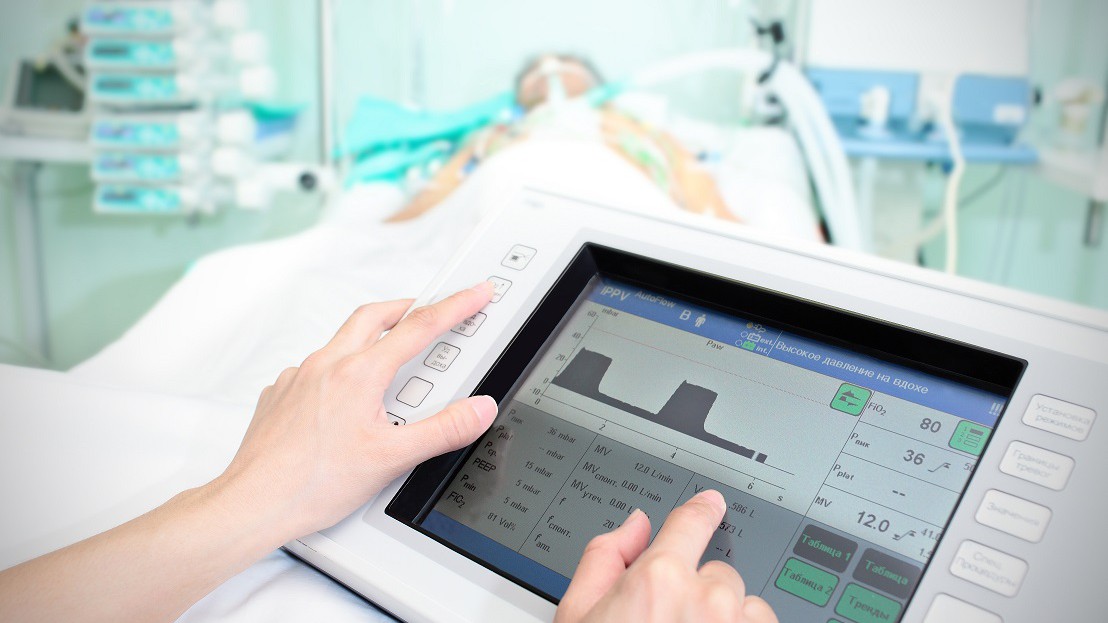In the fast-paced, high-stakes world of the Emergency Room (ER), having the right equipment on hand is not just about efficiency—it’s about saving lives. Essential ER equipment, from advanced diagnostic tools to life-sustaining devices, forms the backbone of effective emergency care, enabling healthcare providers to respond swiftly and accurately to a wide array of medical emergencies.
This blog aims to explore the crucial role of such equipment, including medical computers, in the dynamic environment of the ER, where every second counts and the right tools can make all the difference.
Diagnostic Equipment
Article Guide
Diagnostic equipment in ERs is essential for rapidly identifying and assessing a patient’s medical condition to inform immediate treatment decisions. It is essential for making informed decisions concerning patient care, facilitating rapid diagnosis, and implementing appropriate treatments.
Vital Signs Monitors
Vital sign monitors are medical devices used to track specific patient vitals. Five basic vitals are usually tracked.
- Electrocardiogram (ECG), which records the electrical impulses of the heart.
- Respiration (RESP) is used to track the patient’s breathing.
- Temperature (TEMP) shows the patient’s temperature.
- Non-invasive pressure (NIBP) for monitoring blood pressure via an electronic sphygmomanometer.
- Oxygen saturation (SpO2) to determine the oxygen level in the patient’s blood.
Advanced vital signs monitoring devices provide more precise information than basic ones, though they require more invasive procedures (inserting a catheter into the patient’s artery).
Imaging Equipment
Medical devices using X-rays, CT scans, MRI, and ultrasound allow providers to view the patient’s interior like their skeleton. Providers can then spot injuries, conditions, and diseases still in their early stages or not causing symptoms like pain.
Past imaging equipment like X-rays used film-based technologies. Today, digital imaging is used as it is far easier to create, view, and store than film. Providers can bring up the images quickly on their medical computers or tablets thanks to Picture Archiving and Communication Systems (PACS) and similar technologies. They can then provide more accurate diagnoses of the patient’s condition to develop effective treatment plans.
Laboratory Testing Equipment
To diagnose patients, ER doctors often order blood work and various lab tests, where speed is crucial because it allows providers to quickly develop treatment plans based on test results.
Automated analyzers enhance this process significantly. These machines can perform the tests requested more swiftly and accurately than human technicians, notifying the provider immediately upon completion. The results can then be accessed by the provider on any medical PC, whether located at the ER nurses’ station or on a mobile workstation.
The advantages of automated analyzers and similar laboratory testing equipment extend beyond speed. By automating processes that were once labor-intensive, these machines significantly lessen the workload on medical staff and help reduce the overall expenses for the healthcare group.
Electronic Medical Records (EMR)
Patient records, treatment history, and drug information help providers diagnose patients and formulate treatment plans. A lack of certain critical information may put ER physicians in the uncomfortable position of making literal life-or-death decisions for their patients.
EMR systems put that critical information at the provider’s literal fingertips. Providers can bring up the latest X-ray images or urine test results from any connected computer, including their HIPAA-compliant home PC or smartphone. They may easily share the information among colleagues and specialists as needed. Such better data management and collaboration increases the chances of a successful outcome.
Treatment and Intervention Equipment
Emergency departments should stock the following treatment and intervention equipment.
- Defibrillators use an electric charge or current if the patient’s heart rhythm stops due to sudden cardiac arrest (SCA) and similar cardiac emergencies. Automated external defibrillators (AED) instruct users how to restart the heart even if they don’t have medical training. On the other hand, only medical personnel may use manual defibrillators as they have more specialized features to detect different heart problems and treat them accordingly.
- Airway management tools ensure oxygen reaches the patient’s lungs if they’re having difficulty breathing independently. Tools used range from intubation kits, which come with tubes to insert into the patient’s trachea, to ventilators, which are medical devices that literally breathe for the patient.
- Intravenous (IV) supplies include IV needles, cannulas, tubes, and infusion pumps. They are used to supply fluids like water and liquid medication into the patient’s bloodstream via a vein.
Wound Care and Surgical Equipment
ER staff use wound care and surgical equipment to close wounds and similar forms of injury management.
- Suture and staple kits contain suture, the threads used to stitch or close a wound, and staples, which perform a similar function. Tools to administer and remove both, like scissors and staple guns, are also found in the kits.
- Emergency surgical kits allow ER personnel to perform minor surgical procedures. Each kit comes pre-packed for quick access and use, and sterilized to ensure patient safety. Scalpels, scissors, and numerous kinds of forceps are just a few of the tools found in the kits.
- Personal protective equipment, or PPE, consists of gloves, gowns, face shields, and masks. They are worn by ER personnel to prevent possible disease transmission, like hospital-acquired infection (HAI), during the treatment of patients.
Specialty Equipment for Pediatrics
Babies, children, and adolescents’ bodies are different from mature adults. Emergency departments should always have in stock age-appropriate materials and equipment for adequate and effective treatment. For example, child-size versions of the patches used for defibrillator electrode placement on the body, or smaller intubation and IV cannula tubes.
Medical-Grade Computers
Medical computers play a pivotal role in the fast-paced environment of the ER, enhancing the efficiency, accuracy, and quality of patient care in several ways:
- Access to Patient Data: They provide immediate access to EMR, including patient history, lab results, and previous imaging, facilitating a more informed decision-making process.
- Diagnostic Support: Medical computers connect to various diagnostic tools, such as laboratory information systems (LIS) and imaging devices (X-rays, MRI, CT scans), allowing for the rapid ordering, execution, and review of diagnostic tests essential for emergency care.
- Real-time Monitoring: They integrate with patient monitoring systems to track vital signs and critical health parameters, enabling quick responses to any changes in a patient’s condition.
- Medication Management: Computers help in managing medication orders and pharmacy interactions, ensuring accuracy in dosage and preventing medication errors.
- Communication and Coordination: They facilitate seamless communication among the ER team, other hospital departments, and external healthcare providers, ensuring coordinated care and timely interventions.
- Documentation and Reporting: Medical computers streamline the documentation process, making it easier to record patient encounters, treatments provided, and outcomes, which is critical for legal, quality assurance, and billing purposes.
- Telemedicine Capabilities: In remote or understaffed locations, ERs can leverage telemedicine on medical computers to consult specialists in real time, ensuring patients receive expert care despite geographical limitations.
Read more: How Medical Grade Computers Are Used in Emergency Rooms
Meeting Your ER Equipment Needs With Cybernet
In the dynamic and unpredictable world of emergency departments, having the right equipment at the ready isn’t just important—it’s imperative for saving lives. At the core of this finely tuned machinery, facilitating seamless operation and ensuring vital data flows exactly where it’s needed, stands the medical computer.
Elevate your ER’s efficiency with Cybernet’s medical computers. Our range of all-in-one computers, medical box PCs, and tablets is engineered to meet the rigorous demands of the ER environment, promising reliability when every moment counts.
Get in touch with our experts and discover how Cybernet can transform your ER’s capabilities and support you in delivering unparalleled patient care.
Join the conversation and connect with us on this and other relevant topics on Facebook, Twitter, and LinkedIn.
Extending the Life of Medical Equipment with Medical Grade PCs
November 13, 2017
The IT challenges and needs for a healthcare facility are far different than those of a traditional enterprise. Mobility, EMR compatibility, as well as 24/7 operability must all be factored in. But even within the…
0 Comments6 Minutes
Medical Tablets are Essential as Patient Engagement Solutions
October 8, 2020
For the past few years, healthcare has been in the midst of a pivot towards patient empowerment. Value-based care, the abandonment of fee-for-service payment models, pushes to allow patients to access their own data,…
0 Comments12 Minutes
You Can't
Learn from a Pop-up
But we can deliver knowledge to your inbox!
We dive deep in the industry looking for new trends, technology, news, and updates. We're happy to share them with you.
Knowledge, News, and Industry Updates Right in Your Inbox




